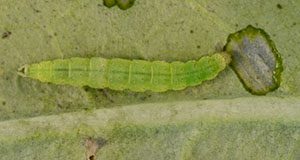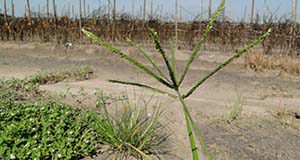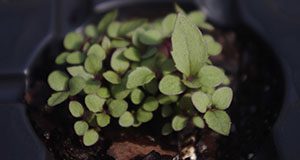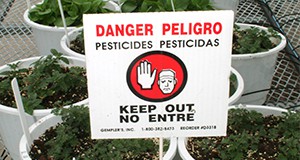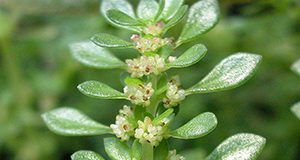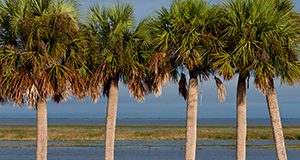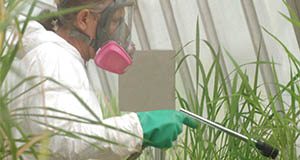Some products that we use in our homes contain chemicals that are hazardous or toxic. We can reduce the potential for exposure to chemicals from household products and produce less hazardous household waste by using alternatives that are relatively free of toxic effects. This six-page fact sheet describes some alternatives that are relatively free of toxic effects. Written by Marie Hammer, Chris Koehler, and Randall Cantrell and published by the Department of Family, Youth and Community Sciences.
http://edis.ifas.ufl.edu/he791
Author: Allison Nick
Effective Practice for Building Cross Sector Partnerships
This four-page article outlines a practical framework built upon best practices that can be used by those considering the development of cross sector partnerships to address environmental and social issues.Written by John M. Diaz and published by the Department of Agricultural Education and Communication.
http://edis.ifas.ufl.edu/wc271
Manejo de Insectos en Cruciferas (Cultivos de Coles) (Brocoli, Repollo, Coliflor, Col, Col Rizada, Mostaza, Rabano, Nabos)
Los vegetales conocidos como crucíferas son un grupo de cultivos amplio y cada vez más importante en Florida. Un número de insectos se alimenta exclusivamente de crucíferas y afecta todos los cultivos enlistados en el título.
This thirty-page fact sheet is the Spanish translation of IG150: Insect Management for Crucifers (Cole Crops). Written by S.E. Webb, A. Nino, y H.A. Smith and published by the Entomology and Nematology Department.
http://edis.ifas.ufl.edu/ig168
Fumigant and Non-Fumigant Nematicides Labeled for Agronomic Crops in Florida
Plant-parasitic nematodes can cause severe yield loss of agronomic crops in Florida. Chemical products for managing plant-parasitic nematodes are called nematicides. This three-page facts heet describes the nematicides registered for use in Florida. Written by Zane Grabau and published by the Department of Entomology and Nematology.
http://edis.ifas.ufl.edu/in1152
Biology and Management of Goosegrass (Eleusine indica (L.) Gaertn.) in Ornamental Plant Production
This six-page fact sheet provides information about the biology and management of goosegrass, including preemergence and postemergence control options. Written by Shawn Steed, Christopher Marble, Nathan S. Boyd, Andrew MacRae, and Kiran Fnu and published by the Environmental Horticulture Department.
http://edis.ifas.ufl.edu/ep538
Alimentos en Pure: Prueba de Textura con la Prueba de Desplome
This is the Spanish version of FS276 Pureed Foods: Texture Testing with the Slump Test. For individuals with dysphagia, the texture of puréed foods is extremely important. If the puréed foods are either too thick or too thin, it can make it more difficult to swallow. The slump test is a quick, easy, and inexpensive way to assess the texture of foods. This four-page fact sheet describes the slump test, how to perform a slump test, and how the slump test can be used to evaluate the texture of puréed foods. Written by Wendy J. Dahl, and published by the Food Science and Human Nutrition Department.
http://edis.ifas.ufl.edu/fs288
Biology and Management of Thickhead (Crassocephalum crepidioides) in Ornamental Crop Production
Typically found in shadehouses and shaded areas of nursery production, thickhead grows aggressively in containers and can outcompete nursery crops for water, nutrients, and light. This erect, sparingly branched, herbaceous annual, grows up to 4 feet tall and germinates over a wide range of pH, salt, and temperature conditions. This four-page fact sheet describes thickhead (Crassocephalum crepidioides) and various methods for its control in ornamental crop production. Written by Allison Bechtloff, Shawn Steed, Chris Marble, and Nathan Boyd and published by the Environmental Horticulture Department.
http://edis.ifas.ufl.edu/ep534
Quick Reference Guide to the Worker Protection Standard (WPS) as Revised in 2015
The Worker Protection Standard (WPS) is a regulation originally issued by the US Environmental Protection Agency (EPA) in 1992 and most recently revised in 2015. This eight-page reference guide gives an overview of the 2015 revisions. Written by Frederick M. Fishel, and published by the Agronomy Department.
http://edis.ifas.ufl.edu/pi270
Florida Citrus Activity Book
The Florida Citrus Activity Book is a basic introduction to Florida citrus trees, diseases, and pests. This 20-page booklet is for elementary students. Written by J.D. Burrow, M.M. Dewdney, M.E. Rogers, and T. Vashisth and published by the Plant Pathology Department.
http://edis.ifas.ufl.edu/pp331
Chronic Kidney Disease: Potassium and Your Diet
Potassium is an essential mineral required for normal body function. It helps maintain normal blood pressure, fluid and electrolyte balance, muscle and nerve function, as well as bone density. This three-page fact sheet describes potassium and its normal dietary importance, as well as the impact potassium levels have on those with Chronic Kidney Disease. Written by Ashley R. Kendall, Nancy J. Gal, and Wendy J. Dahl and published by the Food Science and Human Nutrition Department.
http://edis.ifas.ufl.edu/fs287
DNA, Technology, and Florida Strawberries
Are Florida strawberries genetically engineered? The answer is no. No genetically engineered strawberry has been commercialized anywhere in the world. The UF/IFAS strawberry breeding program has been developing strawberry varieties for nearly 70 years, but these varieties are developed using a conventional breeding process of crossing and selection. This three-page fact sheet describes that process in greater detail. Written by Seonghee Lee, Young-Hee Noh, Sujeet Verma, and Vance M. Whitaker and published by the Horticultural Sciences Department.
http://edis.ifas.ufl.edu/hs1287
Also see the UF/IFAS press release (12/14): UF/IFAS scientists: Commercially grown strawberries are not genetically engineered
Biology and Management of Pilea microphylla(Artillery weed) in Ornamental Crop Production
This five-page fact sheet describes the biology and management of Pilea microphylla, or artillery weed, for ornamental crop production. Artillery weed occurs primarily in moist, disturbed areas and is thought to be native to South America and parts of North America. It is found throughout Florida. Written by Debalina Saha, Chris Marble, Shawn Steed, and Nathan Boyd and published by the Environmental Horticulture Department.
http://edis.ifas.ufl.edu/ep535
Fertilization of Field-Grown and Landscape Palms in Florida
Palms growing in Florida landscape or field nurseries are subject to a number of potentially serious nutrient deficiencies. This five-page document discusses the prevention and treatment of these deficiencies. Written by Timothy K. Broschat and published by the Environmental Horticulture Department.
http://edis.ifas.ufl.edu/ep261
Estimating Return on Investment (ROI) for a Behavior Change: An Evaluation Tool for Extension Programs
Extension professionals can benefit from knowing the value of a program’s outcomes compared to how much it costs. One way to estimate a program’s value relative to cost is through a series of calculations, known as Return on Investment (ROI). This four-page fact sheet describes ROI and how Extension professionals can use it in their programming. Written by Amanda D. Ali, Laura A. Warner, and Hayk Khachatryan and published by the Department of Agricultural Education and Communication.
http://edis.ifas.ufl.edu/wc270
University of Florida Potato Variety Spotlight: Snowden
This five-page fact sheet describes a new University of Florida potato variety named Snowden. ‘Snowden’ is a potato variety that is commonly grown for the potato chip market. It was named and released in 1990 from the University of Wisconsin’s Lelah Starks Potato Breeding Farm in Rhinelander, WI. Tuber production and quality results provided in this spotlight are summarized from various variety trials conducted by the University of Florida’s Hastings Agricultural and Extension Center from 1998 to 2015. Written by Rodrick Z. Mwatuwa, Christian T. Christensen, and Lincoln Zotarelli and published by the Horticultural Sciences Department.
http://edis.ifas.ufl.edu/hs1286
Agricultural Soils of Florida
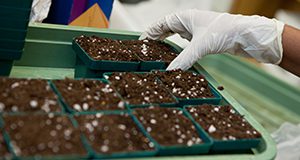
This seven-page fact sheet describes the various soil Orders in Florida, how they were developed, their characteristics, coverage in the state, and uses. This information is important for educating land owners, decision-makers, and educators about soils in Florida, leading to better soil management for agricultural and environmental sustainability. Written by Rao Mylavarapu, Willie Harris, and George Hochmuth and published by the Soil and Water Sciences Department.
http://edis.ifas.ufl.edu/ss655
Herbicidas Postemergentes para Uso en Ornamentales

This is the Spanish language version of ENH95/WG095 Postemergent Herbicides for Use in Ornamentals http://edis.ifas.ufl.edu/wg059 Postemergent herbicides are applied directly to weeds. This 5-page fact sheet is largely comprised of two tables: Table one lists postemergent herbicides that can be safely used over the top of some ornamentals when used according to label directions; table 2 lists postemergent herbicides that are registered for use around ornamental plants when applied as a directed spray. Written by E. Vanesssa Campoverde, Chris Marble, and Jeffrey G. Norcini and published by the Environmental Horticulture Department.
http://edis.ifas.ufl.edu/ep533
A Guide to Probiotics and Health
Probiotics are beneficial for gastrointestinal wellness, immunity, and a variety of other health outcomes. There are hundreds of probiotic supplements available in the marketplace and choosing a supplement can be challenging. This six-page fact sheet provides a summary of the health benefits of probiotics that are backed by a high level of scientific evidence. Written by Wendy J. Dahl and published by the Food Science and Human Nutrition department.
http://edis.ifas.ufl.edu/fs286
Bacterial Wilt of Southern Highbush Blueberry Caused by Ralstonia solanacearum
Bacterial wilt is a newly discovered disease of blueberry in Florida. Plants with bacterial wilt will show signs of water stress such as wilting and marginal leaf burn. The disease was initially confirmed on three farms in Florida. This three-page fact sheet describes the symptoms, occurrence, and management of bacterial wilt in blueberry. Written by Philip F. Harmon, Carrie Harmon, and Dave Norman and published by the Plant Pathology Department.
http://edis.ifas.ufl.edu/pp332
Worker Protection Standard: Training Workers and Handlers under the 2016 Revision Requirements
In 1992, the US Environmental Protection Agency (EPA) issued a comprehensive regulation called the Worker Protection Standard for Agricultural Pesticides (WPS). The EPA has made several changes to the WPS since it was fully implemented in 1995. On November 2, 2015, the EPA revised the WPS, making significant changes to the rule’s requirements. Most of the revised provisions will become effective January 2, 2017; there are four provisions that are delayed until January 2, 2018. This five-page fact sheet answers questions regarding changes made to the rules about how to train Workers and Handlers. Written by Frederick M. Fishel and published by the Agronomy Department.
http://edis.ifas.ufl.edu/pi268


